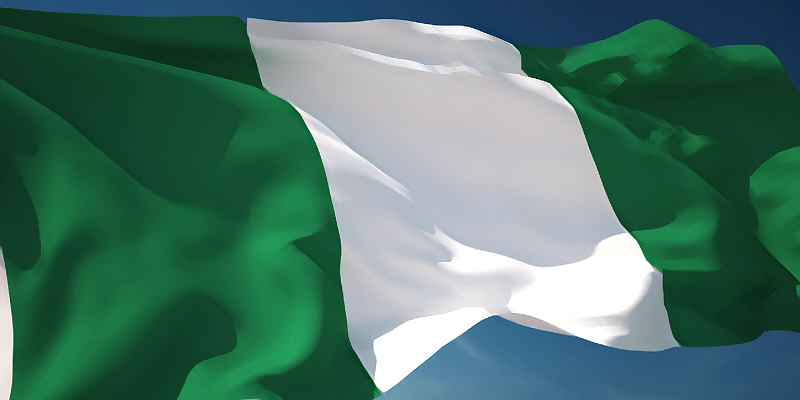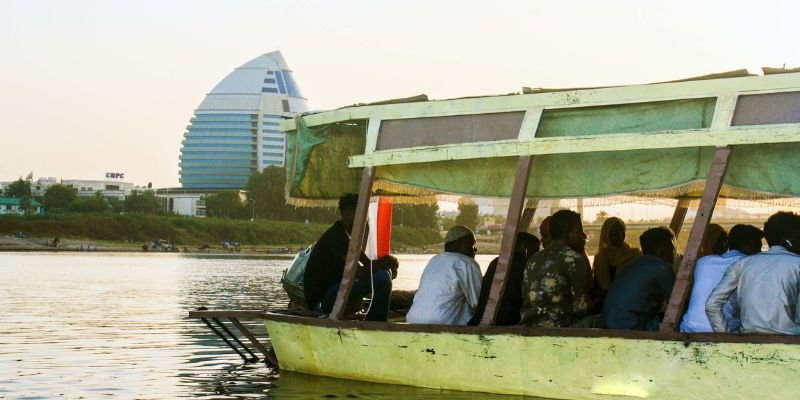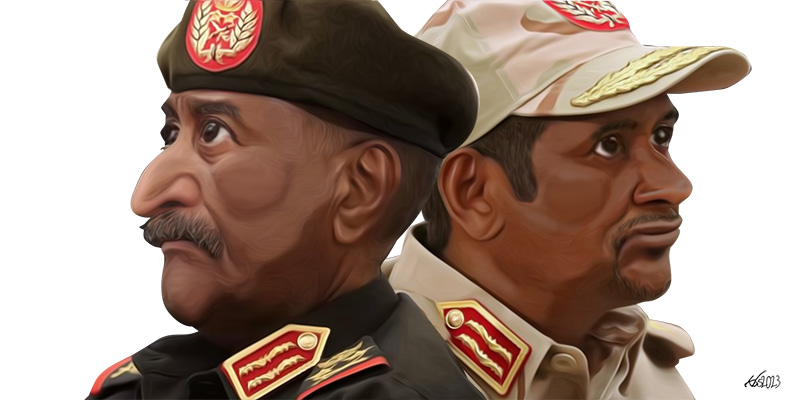On February 25, Nigerians once again took to the polls with a determination that their votes could change the fate of a country in deep despair. For the seventh time since a civilian dispensation began in 1999, Nigerians hoped that the Independent National Electoral Commission (INEC) would conduct a free, fair, and credible election. This hope was reinvigorated by the emergence of technology that would ensure, purportedly, a transparent process. Yet, once again, voters had their dreams crushed with an election marred by violence, ballot box snatching, forged results and, of course, voter intimidation and buying. In the days that followed, despite mounting evidence of irregularities and international outcry, INEC declared Bola Ahmed Tinubu, of the All Progressives Congress (APC), the winner of the presidential poll. The continuation of a gerontocratic oligarchy was solidified.
Although media attention focused on a young class of voters and the uniqueness of this historical moment, a deeper analysis is necessary. If nothing else, this election provided an opportunity to examine the shifting landscape of Nigeria’s elite electoral politics, and the increasingly complex voting patterns of citizens, while understanding these voters are increasingly a minority—less than 30 percent of the registered voters (about one-tenth of the population) cast their vote.
The dizzying rise of Peter Obi as a “third force” candidate over the last nine months was largely due to a movement of emergent and middle-class youth, the so-called “Obidients,” who used technology to galvanize a youthful base to push forward their candidate. That the Obidient movement was formed, ironically, off the back of the EndSARS movement, is in many ways a direct contradiction. The generation that was “leaderless” now suddenly had a leader. The rate at which young people chose this candidate still gives me whiplash. But there was no shaking their convictions. Obi was their candidate, and no one could shake their belief that a new Nigeria would be formed under his presidency, despite the evidence that he was directly endorsed by the same ruling class that has led to the country’s demise.
Obi is not a revolutionary, a social welfarist, nor even pro labor, but he became the savior many youth were looking for to “rescue” Nigeria. Ironically, the millions of youth that fought the EndSARS battle, and named themselves the leaderless soro soke (“speak up” in Yoruba) generation, did not seek elective office themselves. Rather, many put their eggs in Obi’s basket in supporting an older, veteran politician whose clean cut and soft demeanor led to his near deification. Other EndSARS activists, including Omoyele Sowore, were mocked for running in the election and were seen as not experienced enough for the job. In the end Sowore performed abysmally at the polls, despite his demonstrated commitment to Nigerian youth and human rights record and involvement in the EndSARS protests (Sowore’s African Action Congress polled only 14,608 votes, faring worse than in the 2019 election).
This absolute faith in Obi was demonstrated when his followers patiently waited for five days after the election to hear from him. Instead of sending them into the streets, he advised them to wait for him to challenge the electoral irregularities in the courts. Why did a leaderless generation need a hero?
The contradictions in the EndSARS ideology and the Obidient campaign will be tested in the years ahead. After the Lekki massacre on October 20, 2020 brought the massive street protests of the EndSARS movement to an abrupt halt, many of the sites of protests shut down completely and groups that were loosely organized dismantled into relative silence for almost two years. In fact, there was little indication that EndSARS would evolve into a mass political movement until Peter Obi emerged on the scene in May 2022. The first- and second anniversaries of the Lekki massacre were marked by smaller protests in Lagos and a few other cities, which paled in comparison to the numbers at the 2020 protests. Still, efforts to free many of the prisoners arrested during EndSARS are proving difficult, with some protesters and victims still in jail today. There was no direction, no cohesiveness, and no willingness to move forward at that point. But in May 2022, seemingly out of nowhere, things began to shift. A candidate emerged that many EndSARS protesters seemed to think would be the savior.
Understanding the youth divide
While often lumped into a sum, the category of “youth” is not a single class of people. When Obi was said to carry the youth vote he actually only carried the vote of a particular category of young people, an emergent middle and professional class, who were also some of the most vocal in the EndSARS movement. However, if we are to use the discredited election geography as a proxy for representation, it is clear that this demographic is both well defined and narrow. Major urban areas like Lagos and Abuja pulled towards Obi, as did a few Eastern states. The North Central states including Plateau and Benue asserted their own identity by aligning with Obi, perhaps in a rejection of the Northern Muslim tickets of the Peoples Democratic Party (with whom Atiku Abubaker ran) and the APC.
The 2023 election also forces us to re-examine the dynamics of class, ethnic and religious divides and the deepening malaise of the poor and their disengagement with politics. What is clear from this election, like many before, is that Nigeria has yet to come of age as a democracy; indeed, the conditions for democracy simply do not exist. It is also quite evident that the Nigerian elite are adept at changing the political game to suit the mood of the Nigerian people. Electoral malpractices have shifted over time in response to the increasing pressure of civil society for accountable elections. Strong civil society advocacy from organizations focused on accountability and transparency in government have pushed against electoral practices. While these practices continue, there are significant shifts from previous elections where vote buying was brazen. However, it begs the historical questions: has Nigeria ever had a truly free and fair election, and is the process with which democracy is regenerated through the ballot the path for emancipatory politics? These questions become more relevant as the numbers of voters continue to dwindle, with the 2023 election having the lowest turnout in Nigeria’s electoral history, despite the social media propaganda around the youth vote and the turning tide of discontent that was predicted to shape the election.
Lessons from history
The fact that young people were surprised by the events on February 25 may be indicative of youthful exuberance or a startling lack of knowledge of history. The idea that a ruling class, who had brought the EndSARS struggle to a bloody end, would somehow deliver a free and fair election, needs more critical scrutiny. For those that remember the history of the June 12, 1993 elections—annulled after the popular rise of MKO Abiola—the election is no surprise. But for young people deprived of history education, which has been removed from Nigeria’s curriculum for the past 30 years, the knowledge may be limited. When a young person says they have never seen an election like this, they also cannot be faulted, as many young voters were voting for the first time. Given that many youth seem to underestimate the long history of elections and electoral fraud, the question of intergenerational knowledge and of a public history that seems to be absent from electoral discourse cannot be ignored. It is also hard to fault young voters, in a land where there is no hope, and whatever hope is sought after can be found in the marketplace.
Many of the young organizers were adept at reading their constituencies and mobilizing their bases, but some of the elephants in the room were ignored. One of these elephants, of course, was the deep geographic and ethno-religious and class divisions between the North and the South. This is evident in the voting patterns in the North West and North East where Obi’s campaign did not make a dent. Though Obi ran with a vice president from the North, the majority of votes in Northern zones were divided between PDP, APC and New Nigeria People’s Party while two of the North Central states, Plateau and Nasarawa, went to Obi’s Labor party. Kano, the largest voting population in the country went to Rabiu Kwankwaso’s NNPP, an outlier who was ignored to the peril of opposition parties (Kwankwaso was the former governor of Kano).
Obi’s campaign also focused on the emergent middle class youth, as well as appealing to religious sentiments through churches on a Christian ticket and ethnic sentiments appealing to his Ibo base in the South East, where he swept states with more than 90 percent of the vote. The North is largely made up of the rural poor with poverty rates as high as 87 percent and literacy rates among young women in Zamfara state as low as 16 percent. Tracking Obi’s victories, most of the states where he won had lower poverty rates and higher literacy rates; states like Delta and Lagos have the lowest poverty counts in the country. While Obi used poverty statistics to bolster his campaign, his proposed austerity measures and cuts in government spending do not align with the massive government investments that would be needed to lift Nigerians out of poverty. While the jury is still out on the reasons for low voter turnout, deepening poverty and the limited access to cash invariably impacted poor voters.
Historically, Nigeria’s presidency has swung between the North and the South, between Muslims and Christians, and this delicate balance was disrupted on all sides. In 2013, an alliance between the Southern Action Congress (AC), the Northern All Nigeria’s People’s Party (ANPP), and Congressive People’s Alliance (CPC) to produce the Action People’s Congress (APC) was able to remove the People’s Democratic Party (PDP) who had dominated the political scene. Another important historical note is that of the legacy of Biafra that lives on, as an Igbo man has never taken the helm of the Presidency since the Civil War. While Obi ran on the promise of a united youth vote, the lingering ethnic and religious sentiments demonstrate the need for his campaign to have created a stronger alliance with the North and the rural and urban poor.
The failure of the youth vote is also a failure of the left
The other factor that we must examine is the failure of the left to articulate and bring into public critique the neoliberal model that all the candidates fully endorsed. Many young Nigerians believe if Nigeria works, it will work for everyone, and that “good governance” is the answer to the myriad problems the country faces. The politics of disorder and the intentionality of chaos are often overlooked in favor of the “corrupt leader” indictment. The left was divided between the Labor Party, whose presidential flag bearer ran on a neoliberal rather than pro worker or socialist platform, and the African Action Congress, who ran on a socialist manifesto, but failed to capture the imaginations of young people or win them over to socialist politics and ideology. In seeking to disrupt the two party power block, young Nigerians took less notice of the lack of difference between the three front running parties, and chose to select the lesser of three evils, based on credentials and the idea that Obi was “the best man for the job.” In fact, the Nigerian youth on the campaign trail emphasized experience in government as a criteria for a good candidate, over and above fresh ideas.
The left also failed to garner the EndSARS movement and channel it into a political force. The emergent youth middle class, not the workers and the working poor, continued to carry the message of liberal rather than revolutionary politics. Unfortunately, just as the gunning down of Nigerian protesters caught young people off guard in October 2020, so too the massive rigging of this election. However, there is no cohesive movement to fight the fraud of this election. The partisan protests and separate court cases by the Labor Party and PDP, demonstrate that the disgruntled candidates are fighting for themselves, rather than as a single voice to call out electoral fraud and the rerun of the election. The fact that there is acceptance of the National Assembly election outcomes and not the presidential election, points to the seeking of selective justice, which may eventually result in the complete disenfranchisement of the Nigerian people.
At this time we must seek answers to our current dilemma within history, the history that we so often want to jettison for the euphoria or overwhelming devastation of the moment. The question for the youth will now be, which way forward? Will we continue to rely on the old guard, the gerontocratic oligarchy that has terrorized Nigerians under the guise of different political parties for the past 24 years? Or will we drop all expectations and pursue the revolution that is sorely needed? Will young people once again rise to be a revolutionary vanguard that works with millions of working poor to form a truly pro-people, pro-poor party that has ordinary Nigerians as actual participants in a virbrant democracy from the local to the federal levels, not just during election time but every day? Will the middle class Nigerian youth be willing to commit class suicide to fight alongside the poor to smash the existing oligarchy and gerontocracy and snatch our collective destiny back?
It is a time for truth telling, for examining our own shortcomings. As young people, as the left, and as civil society, we have relied too long on the oppressors for our own liberation.
–
This post is from a partnership between Africa Is a Country and The Elephant. We will be publishing a series of posts from their site once a week.







